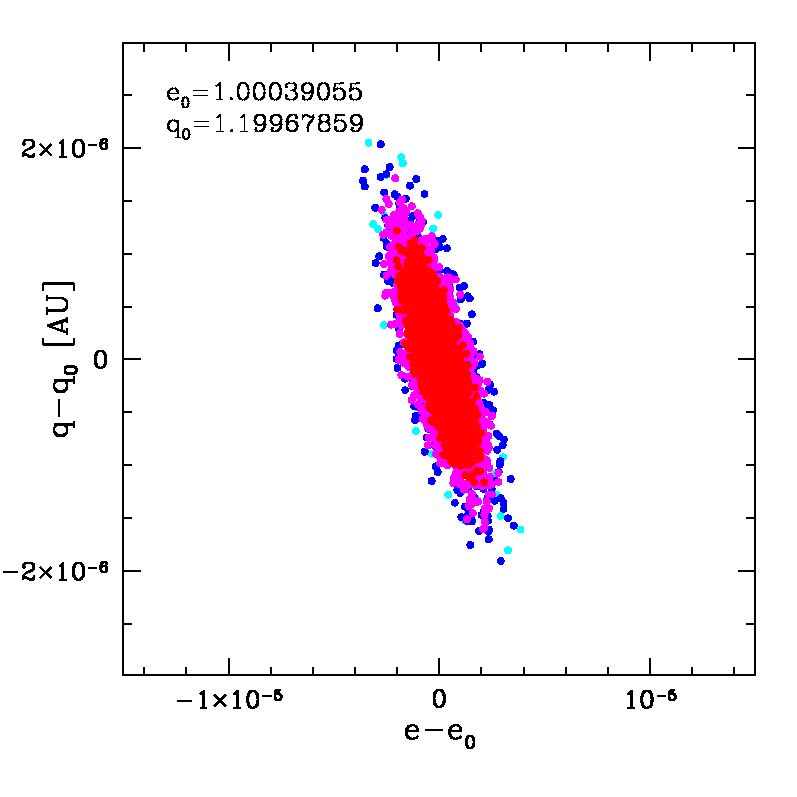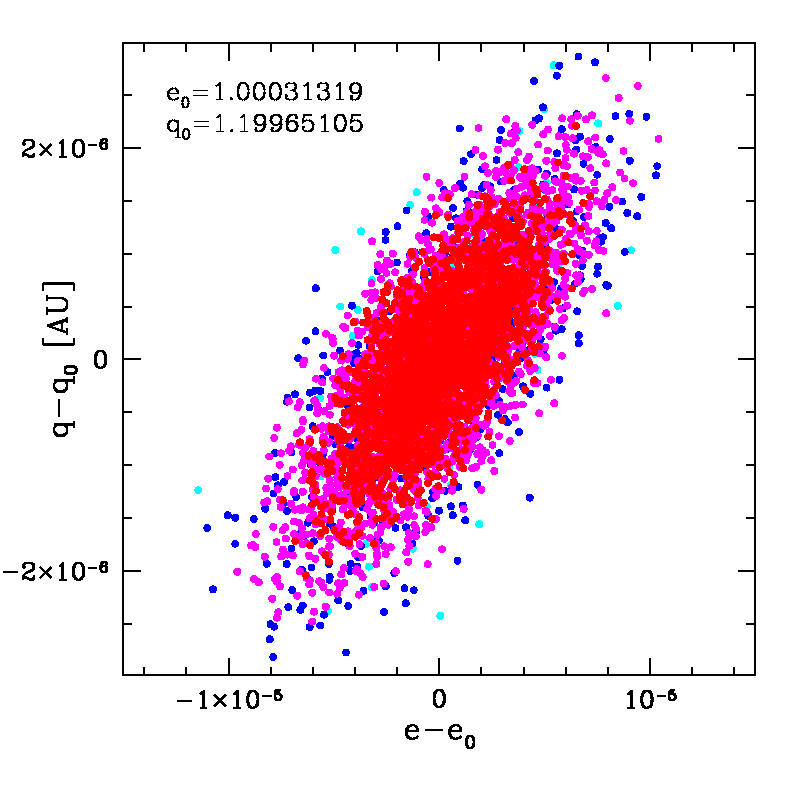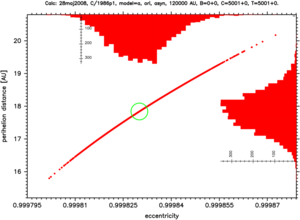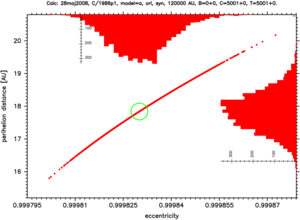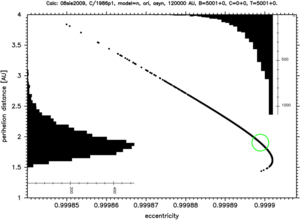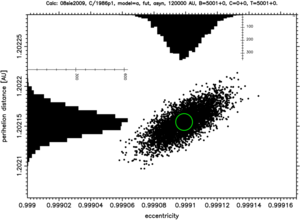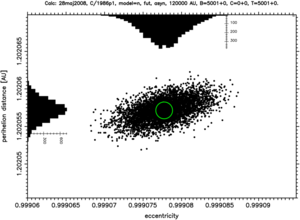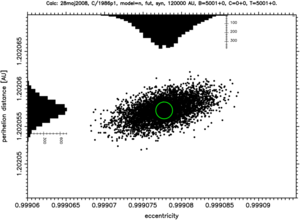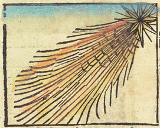Nongravitational nominal solution
Observational arc: 1986 08 05 - 1989 04 11 Number of observations: 688 RMS: 1.11 arcsec (1361 residuals used, 1.1% rejected residuals )
Heliocentric osculating orbit
Epoch Perihelion time q e ω Ω i
1987 05 05 19870420.780693 1.19965105 1.00031319 238.307145 111.666056 147.119122
± 0.000054 0.00000056 0.00000315 0.000104 0.000060 0.000029
NG parameters:
A1 = (1.7501 ± 0.0600) ×10-8 AU/day2
A2 = (0.00335 ± 0.02714)×10-8 AU/day2
A3 = 0 (assumed)
Barycentric nominal original orbit (at 250 AU from the Sun)
Epoch Perihelion time q e ω Ω i
1688 05 11 1987 04 20.100152 1.19367382 0.99994987 238.197884 112.121119 147.179338
± 0.000097 0.00000087 0.00000236 0.000054 0.000041 0.000032
1/aori = (+42.00 ± 1.97)×10-6 AU-1
Barycentric nominal future orbit (at 250 AU from the Sun)
Epoch Perihelion time q e ω Ω i
2294 11 11 19870419.783953 1.20210995 0.99907772 238.317965 112.428992 147.190207
± 0.000120 0.00000173 0.00000282 0.000141 0.000040 0.000026
1/afut = (767.22 ± 2.35)×10-6 AU-1
In the 17th edition of the Catalogue of Cometary orbits (2008):
Nongravitational orbit (642 obs.) with A1=1.8 10-8 AU/day2, A2=0.1 10-8 AU/day2.
The same comet in some other internet sources:
More details
Starting swarms of VCs...(heliocentric, osculating orbits)
Original and future orbit at the 250 AU from the Sun.
Comet number 10 in the Table: Nongravitational Oort spike comets (26 objects)
| Name | GR (1/a)ori [10-8 AU/day2] | GR (1/a)osc [10-8 AU/day2] epoch [TT] | GR 1/afut [10-8 AU/day2] | RMSGR [arcsec] | NG (1/a)ori [10-8 AU/day2] | NG (1/a)osc [10-8 AU/day2] epoch [TT] | NG 1/afut [10-8 AU/day2] | RMSNG [arcsec] | NG parameters A1 A2 A3 [10-8 AU/day2] tau shift [day] | |
| 10 | C/1986 P1 Wilson weighting | +9.53 ± 0.82 | -325.55 ± 0.83 1987 05 05 | 735.14 ± 0.82 | 1.35 | +42.00 ± 1.97 | -261.07 ± 2.63 1987 05 05 | 767.22 ± 2.35 | 1.11 | 1.7501 ± 0.0600 0.00335 ± 0.02714 |
Note: in the following plots black denotes returning clones while red denotes escaping ones.The nominal solution is located at the center of the green circle. Each plot have a header where date of calculation and some other parameters are coded. Also numbers of returning (B=shown+omitted), escaping (C=shown+omitted) and all (T=shown+omitted) Vcs are shown.
Due to the complicated physical and dynamical behaviour of this comet we derived several different models of its motion. More information can be found in Section 5.3.4 of our Paper 1. Model BEFORE means past motion starting from NG osculating orbit based on observations before splitting event, model AFTER denotes orbits starting from GR osculating orbit based on observations after the splitting (the NG effects were indeterminable for data after splitting).
Past orbits, at previous perihelion for the returning VCs :
Future orbits at next perihelion for the returning VCs :
